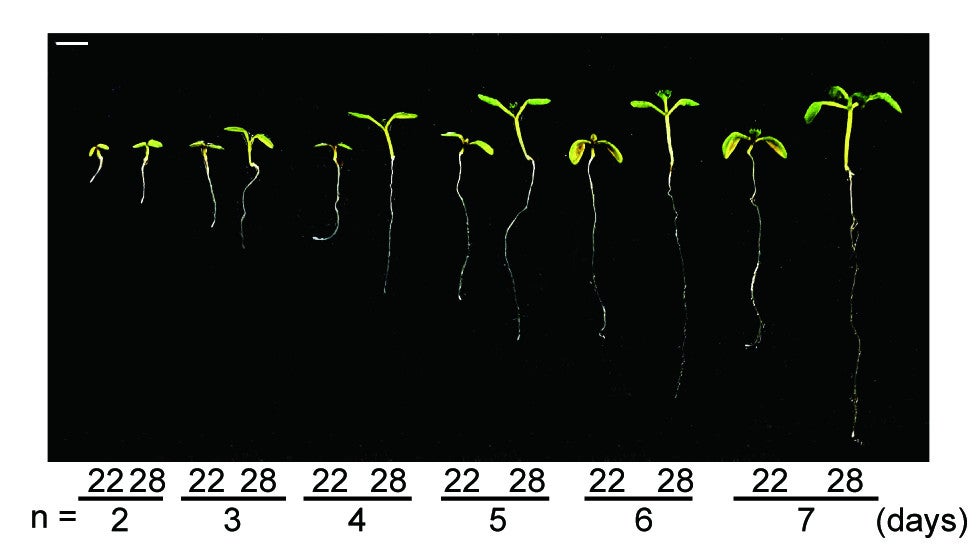New Insights Could Lead to Crops Adapted to a Warming World

Pairs of seedlings show the difference in growth patterns for plants living in 22°C (left one in each pair) versus 28°C (right). Pairs of seedlings are shown for each day, from 2 to 7 days.
When air temperatures rise, plants tend to grow differently: they grow taller, their roots grow deeper, they bloom earlier and pores in their leaves get fewer. By helping them stay cooler and retain more water, these changes might enable them to adapt to our rapidly warming world. But there's a big downside for us humans. When it's hotter, crop plants that we depend on tend to have a lower yield.
A new study from biologists at The University of Texas at Austin offers hope that breeders will be able to develop crops that can tolerate higher temperatures while also maintaining high yield—and perhaps even fight climate change by storing more carbon in their roots.
Enamul Huq, professor of molecular biosciences, and his team report today in the journal Nature Communications that the molecular mechanism controlling how plants react to elevated temperatures is more complex than previously thought. They grew Arabidopsis—small weedy plants native to Eurasia and Africa—from seeds in growth chambers, some at 22°C and others at 28°C (about 72°F and 82°F). Experiments were carried out by Sanghwa Lee, a graduate student in the Huq lab.
After several days, it was clear that plants in the hotter environment grew differently, as expected. They discovered that a protein called SPA1 kinase acts as a kind of master controller for two transcription factors that alter the growth patterns of the plants based on temperature. (Only one of the two was previously known to play a crucial role.)
"I want to create an ideal plant," Huq said. "The more mechanistic details we know about this, the more precisely we can tailor crop plants that are resilient to climate change."
Huq and his team are focused on understanding how plants work on a molecular level, rather than developing specific plant breeds. But he envisions other, more applied researchers taking these new insights and using genetic engineering to develop new plant breeds that can reduce or mitigate climate change and continue to feed a growing global population.
This work was supported in part by grants from the National Science Foundation and the National Institutes of Health. The Texas Advanced Computing Center at UT Austin provided high performance computing, visualization and database resources.



